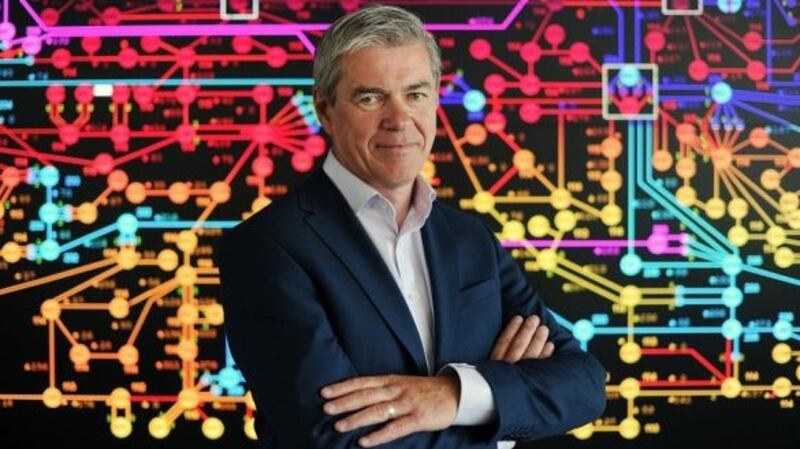EirGrid has just launched its new strategy for the five-year period from 2020 to 2025 which will see it invest €2 billion in helping to decarbonise Ireland’s electricity system.
"We have a major role to play in making the Climate Action Plan happen," says EirGrid chief executive Mark Foley. "We are not the only actor involved, of course. There are plenty of others out there, but we are at the epicentre of it. We are putting all the pieces of the jigsaw together when it comes to electricity."
The action plan states that 70 per cent of our electricity will be generated from renewable sources by 2030. "If you take 2020 as the reference point, 40 per cent of the electricity generated on the island of Ireland will come from renewables during that year," Foley says. "That will mainly come from onshore wind and a little bit of solar. At present, onshore wind generates 5,000MW of electricity every year. The challenge is to go from there to 70 per cent in 2030. That will require us to break new ground in the amount of renewable electricity we manage on the electricity system."

The network will have been massively decarbonised, and generation will all be from gas and renewables at that point, he says. "We will need another 10,000MW of renewables. That will come from onshore wind, a lot more solar, and an increasing contribution from offshore wind in the Irish Sea. It will be the biggest transformation of the network since electricity arrived in Ireland. We will deploy technologies in smart ways to make the grid operate more efficiently and effectively. We also have to build an interconnector from Ireland to France both to provide back-up capacity for this country and to facilitate the sale of Irish renewable energy to the French market."
The majority of the envisaged investment will go into new technologies to strengthen the network to make it as reliable and secure as it is today despite the massive increase in renewables. “The power network is very stable at present and the challenge is to make sure it remains so,” Foley adds.
Generation characteristics
Without getting too technical, electricity generating from renewable sources has very different characteristics to that which comes from traditional fossil fuel power stations. According to Foley, they do not go well together on the same network and the challenge is analogous to mixing oil with water.
“We have to do an awful lot of technical things on the power system to cope with higher levels of renewables,” he adds. “But what gives us confidence that we can do that? We have got to 40 per cent so far and we have a long track record of delivery in this regard. We are now driving it to a new level.”
A simple example of some of one of those technical enhancements is battery storage. “In the next couple of months, we will be deploying several batteries on to the system,” he says. “Other players in the market will provide the batteries and other services and they will be paid for that. We will also be connecting all those new wind farms and solar generating plants in the coming years. They will be built by third parties as well. Our role is to work with all parts of the ecosystem as we connect new energy sources and deploy new products and services to the system.”
The approach is based on partnership. “We can’t do it all on our own”, Foley explains. “It’s about having the right partnerships with the right collaborators and working hand in hand together to get the job done.”
Public engagement
The other dimension to the strategy is public engagement. “Advances in technology are increasingly helping us to find less intrusive ways to move large amounts of power, but all electricity grids, in any country, depend on a backbone of large-scale infrastructure,” he says.
“This means we still rely on pylons, substations and overhead wires. Asking landowners and local communities to accept new infrastructure has never been an easy task. We never take these decisions lightly, or without first investigating all alternative solutions. But where new infrastructure is essential, we need to inform and persuade the people and communities affected.”
Very many projects have been completed with the consent and approval of communities, he says. “A lot of stuff got built over the last few years and Ireland has as good a track record as anywhere else when it comes to engagement. But it has to be taken to a whole new level if we are to win the hearts and minds of people when it comes to the level of development required in future.
“We have to ensure that people and communities see understand the connection between what we are doing and the Climate Action Plan. Everyone involved in the development of electricity infrastructure needs to reflect deeply on the way it has been done in and get the engagement piece right for the future.”










